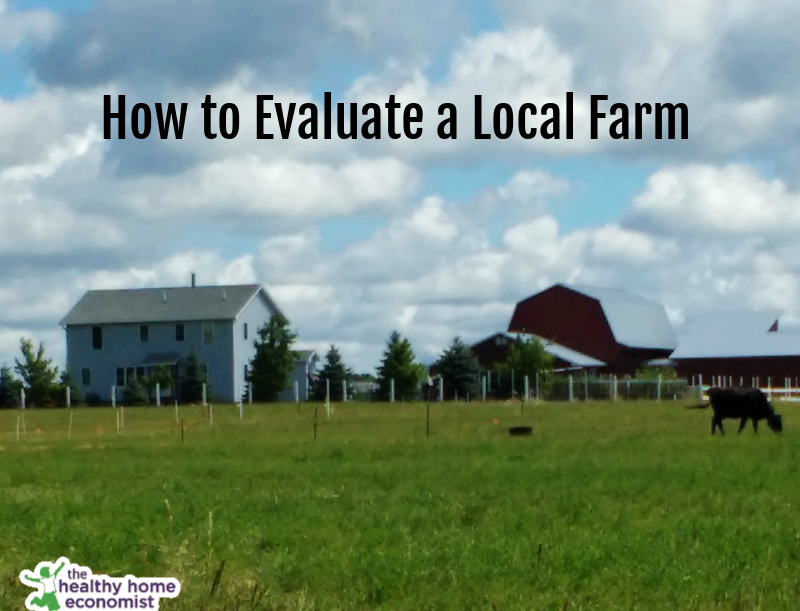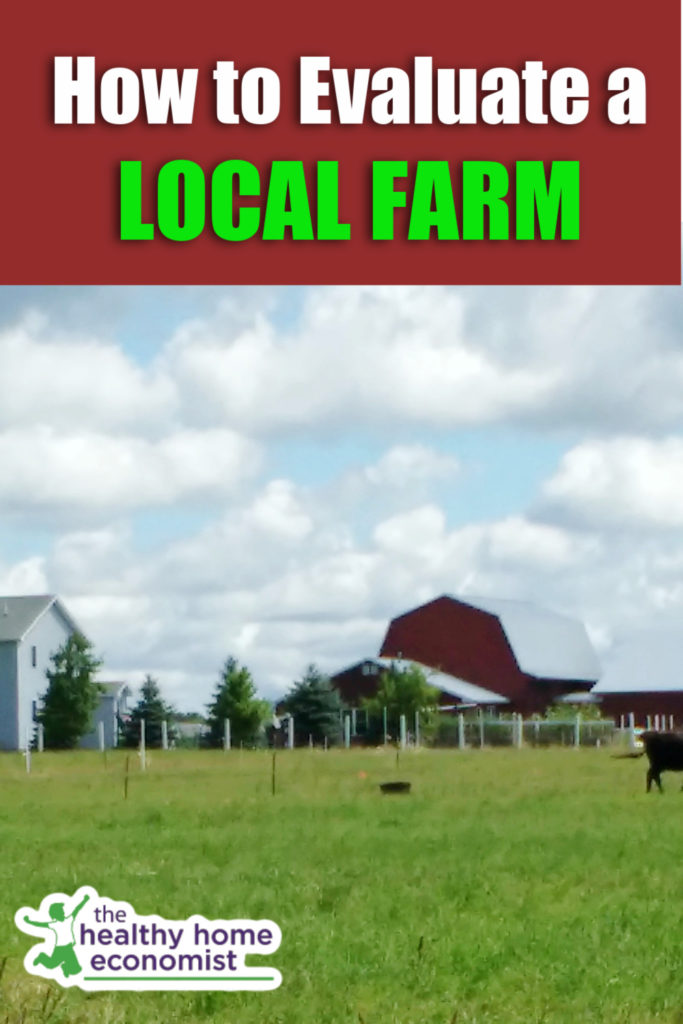Table of Contents[Hide][Show]
How to evaluate a local farm for quality based on the appearance of the animals, quality of the pasture, and the barn and milk house as well as testing that should be regularly performed.
People new to buying grass-fed dairy typically have no idea how to evaluate whether a farm is a good place to spend their local food dollars. Beware – not all grass-based farms are created equal! There are definite signs to look for that will tell you whether or not the farm is well maintained and the animals healthy and capable of producing nutrient-dense dairy for your family.
The following list is based on a lecture I attended at a Wise Traditions Conference. The talk was given by Tim Wightman, Grassfed Dairy Consultant and author of the Raw Milk Production Handbook. Tim has been a farmer for several decades and a dairyman for over twenty years.
Cows
Cows should have a comfortable place to lay down. The herd should look relaxed when laying down, with cows that look half-asleep, possibly with their heads tucked to the side or chewing their cud contentedly. Cows that are forced to lay down in mud or on concrete indicate a poor quality dairy situation.
The herd should be busy grazing and visibly content.
Cows should have good color definition. Brown is brown and white is white. The color stays in the lines and different colors on the cow should not blend together. “Happy lines” on the cows are a good indicator of herd health.
Hair standing up at the back and around the backbone can indicate cows that are not producing particularly nutrient-dense milk.
Cows should be shiny! In winter, the thicker coat reduces this shine somewhat, but cows that don’t shine are not healthy.
Calves should look like adult cows, only smaller. Their backs should be flat.
Cows look at you with their ears. When a cow looks in your direction, the ears should stand up and move in your direction.
Pasture
The pasture where the cows are grazing should have grass that goes over their hooves. Pasture that does not reach that high indicates an overgrazed situation.
The grass in the pasture should be lush. A weedy pasture with visible dirt patches is not a good sign.
Bales of hay in a lush pasture are not only beautiful but also an indicator of a watchful farmer. Too much lush grass can give cows too much protein. Hence, some hay is sometimes needed to reduce the protein in the diet.
Chickens and Other Birds
Diversity in chicken species is not a good sign unless there is plenty of space to roam.
If there is mixing of chicken species, look for missing tail feathers. This indicates too little space for laying hens to free-range.
Do not be concerned if meat birds lay down. This is what they do. Laying hens run around but meat birds do not.
Chickens running around where cow feed or hay is located is not a good sign. Chickens in the pasture are fine, but NOT in the feeding area as cows that eat chicken droppings can harbor salmonella.
Lots of starlings or pigeons in a barn or on wires near a silo is a bad sign. Birds near any sort of feed are a risk of contamination from their droppings.
Look for how many birds are nesting around the cows. It should not be many!
Bird nests over where the cows eat are a problem due to bird dropping contamination.
Contented Cats
Look for cats around the property. Cats are a very good indicator of how well the farm is managed.
Cats should be content, healthy-looking, and easy to pet. Sneezing cats with gunky eyes or a bad coat is a bad sign for the farm in general.
Cats keep scavenger birds down to a minimum on a farm, so fat and sassy cats are a good sign.
Barn and Milk House
The barn should smell like beechnut chewing tobacco.
The barn should NOT smell like ammonia, vinegar, or salami.
The milk house should have clear or black hoses. Orange stained hoses or cracked black hoses are not a good sign. Hoses should be replaced once a year.
The glass in the milking house should be crystal clear.
The window sills should be clean with no dust.
No pitting should be visible on the floor.
Off-colored PVC vacuum lines or stainless steel milk lines (with dust) are not a good sign of cleanliness and attention to detail.
Dairy Testing
Ask what testing the farmer does on his milk. No farm is perfect, but the following tests done once per month are inexpensive and very telling. While a very good tool for the farmer to judge the quality of his cows’ milk, note that they are not mandatory.
- Bulk tank cultures – identifies mastitis in the herd and its prevalence
- Pathogen test results (should be zero)
- MUN Test (Milk Urea Nitrogen) – should be 12-13
If the farmer says he doesn’t test because he doesn’t feed any grain and because he never had a problem, this is not a good enough answer. No farm or farmer is perfect.
A MUN that is too high – 23 or so – would mean that the milk won’t clabber, doesn’t ferment into yogurt or kefir, and the cream won’t whip. High MUN milk is also a little tangy and bitter tasting.
Clearly, there is more to grass-based farming than simply cows grazing on grass. Cows are sensitive creatures and biology is not a switch that can be turned on and off. Farmers transitioning to grass-based farming should be given time to do so and not be asked to quickly flip a biological switch (grain to grass) that is not possible and ultimately unsustainable.
An educated customer is the best consumer!
**The photo above is of the gorgeous Lapp Family Farm in Western New York!









Why should cows have distinct color markings? Unless you are wondering if they are dirty whereas white is dirty. I’ve never heard of this before.
My understanding is that good color definition is an indication of overall health. I obtained this info from Tim Wightman of the Farm to Consumer Foundation, so feel free to reach out to him for more information on that.
Hi, I agree with all of your points in evaluating a farm. I’d also like to add Stocking Density to the equation–if it looks like there are too many cows, sheep, hens, etc. for the piece of land to support them, there probably are. Like you said, how much grass is around, and does it seem like the animals are rotated to fresh pasture often?
One thing, what do you mean by “diversity in chicken species”? Do you mean different breeds of chickens? Or different species of birds? My husband and I raise both laying hens and meat birds–they are housed very differently and in different areas of the farm. Our laying flock consists of between 3 to 4 different breeds of hens, which live on pasture in mobile hoop houses that are moved weekly. The meat birds live in bottomless pens that are moved daily. I wouldn’t necessarily say that just because a flock of birds consists of several different breeds it is not managed properly. So the biggest issue is space, as you have pointed out, and how much the birds are able to forage.
Thank you for the post!
Sarah
Bayou Farm